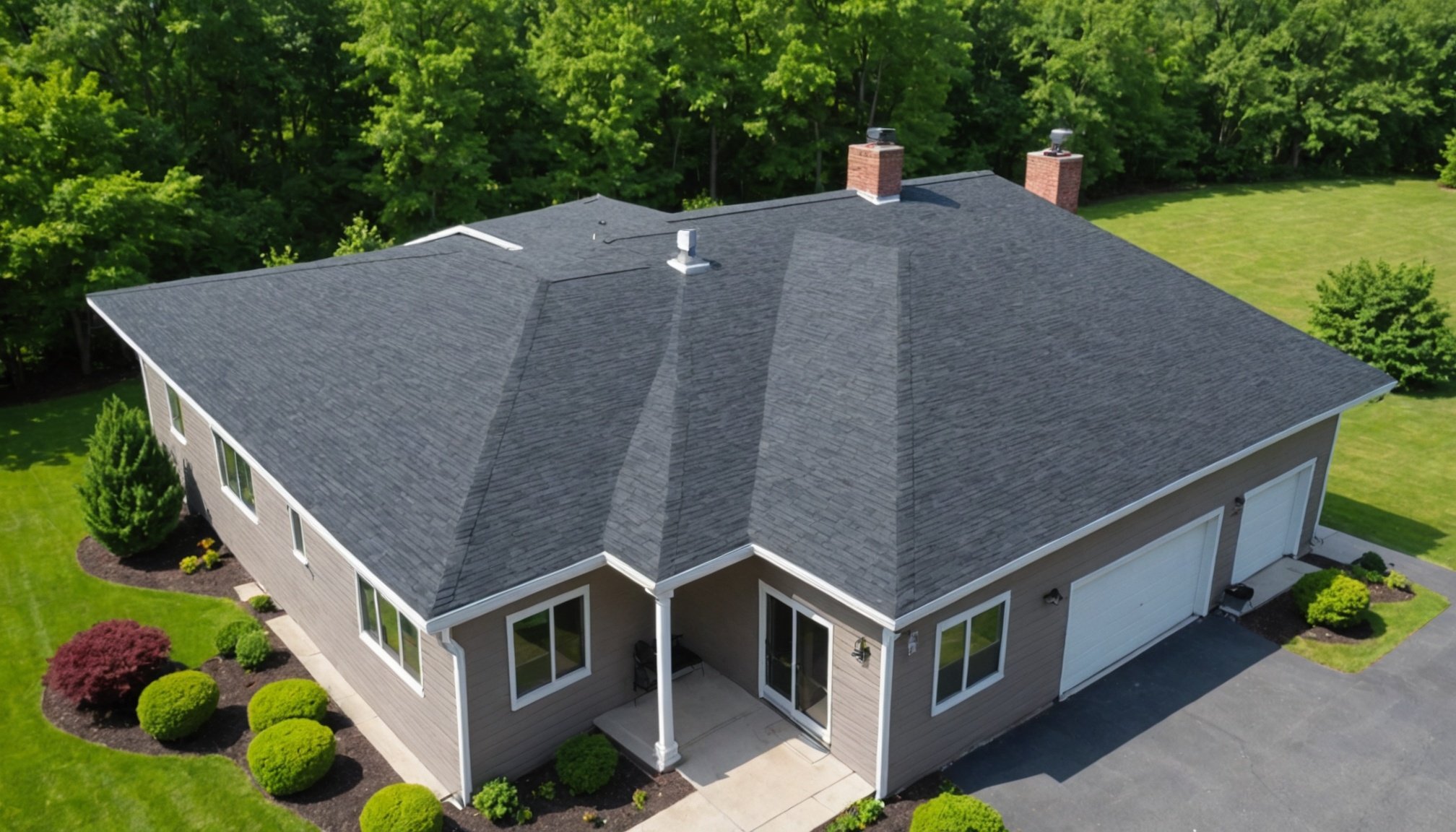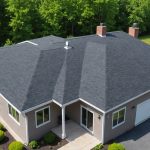Introduction to Flat Roof Insurance
Navigating the world of homeowner’s insurance can feel like steering a complex maze, especially when it comes to flat roofs. A flat roof is characterized by its almost level shape, lacking the traditional sloping design. It is a popular choice for commercial buildings due to its cost-effectiveness. Homeowners, however, occasionally use it for modern or urban home settings. The difference in design introduces unique risks. That is why specialized flat roof insurance becomes crucial.
Flat roofs, due to their design, accumulate water easily, leading to leaks, mold, or structural damage. These risks are not excessively covered under standard homeowner’s policies. Consequently, a tailored approach to insurance is essential to address specific vulnerabilities. This customized insurance acts as a safety net, providing peace of mind to homeowners.
Also read : Navigating Financial Risks of UK Property Investment Amidst Brexit Uncertainty: What Investors Need to Know
The unique risks associated with flat roofs include:
- Ponding water: tends to collect, increasing potential for water damage.
- Thermal movement: due to temperature variations, causing stress.
- Material durability: can deteriorate faster, depending on material used.
Understanding these aspects enhances a homeowner’s ability to select comprehensive insurance, ensuring coverage for potential damages. Consider speaking with insurance specialists who specifically address flat roof concerns for tailored advice and coverage.
Also to read : The Impact of Air Quality Ratings on Property Values and Mortgage Rates Across the UK
Roof Material Considerations
Understanding the impact of roof materials on insurance premiums is crucial for homeowners. Different roofing options not only offer varying durability but also significantly affect insurance costs.
When it comes to flat roofs, materials like bitumen, EPDM rubber, and thermoplastic single-ply membranes are commonly used. Each of these materials offers unique benefits but also comes with different price points and insurance implications. Generally, more durable and resistant materials may lead to lower insurance premiums as they minimise potential damage costs.
Durability is a primary consideration when selecting roofing materials. For instance, EPDM rubber is noted for its resilience and long lifespan, making it a cost-effective option over time despite potentially higher upfront costs. Bitumen is also popular, providing rugged weather resistance. However, material choice can impact not only the lifespan of the roof but also insurance coverage options available to homeowners.
Materials that stand up well to weather extremes might lower your premiums due to decreased risk of damage claims. It’s advisable to consult with insurance providers to understand which roof materials might offer the best balance between coverage and cost. Prioritising durable materials may lead to long-term savings on insurance and maintenance expenses.
Maintenance Requirements
Regular roof maintenance is essential in minimizing risks and keeping your home safe. Conducting periodic inspections and repairs can prevent potential damage that may lead to costly repairs. By staying proactive, you can avoid extensive wear and tear on your roof and extend its lifespan.
Maintaining detailed maintenance records is not merely a chore, but a strategic move when dealing with insurance companies. These logs provide evidence of diligent upkeep and can have a substantial impact on your insurance policies. Well-documented records demonstrate responsible ownership, potentially leading to more favorable terms or decisions when filing an insurance claim.
The financial implications of neglecting your roof’s upkeep can be significant. Insurance claims related to roof damage can be dramatically affected by the state of your roof. If neglect is evident, insurers may reduce payout amounts or even deny claims. Thus, investing in regular maintenance can ultimately save money by preventing deny claims and expensive repair costs.
As a result, homeowners are encouraged to engage with professional services for routine inspections and cleaning. By doing so, they ensure their roof’s longevity and their investment’s protection. Keep your maintenance practices up-to-date, and enjoy both peace of mind and financial stability.
Insurer Preferences
Understanding insurance providers and their preferences is essential for homeowners, especially those with flat roofs. Insurance companies use specific underwriting criteria to assess risks, and flat roof properties often have unique considerations. Generally, insurer preferences are influenced by factors such as the roof’s age, material, and maintenance history.
Comparing different insurers reveals varying attitudes towards flat roof homes. Some providers may be cautious due to potential leak risks, particularly with older flat roofs, while others may only require regular maintenance evidence. This variation in underwriting criteria means homeowners should shop around for the best coverage options.
Several factors can lead to policy denial or higher premiums. Key elements include the roof’s condition, any past water damage, and the homeowner’s history of claims. Insurers pay close attention to the building materials used, as some materials might be more prone to damage. Additionally, if a property is located in an area with extreme weather conditions, this might further influence the evaluation.
To cater to these insurer preferences, homeowners should maintain their roofs diligently and provide comprehensive documentation regarding repairs. By understanding these criteria, property owners can better negotiate their terms and possibly secure more favourable insurance policies.
Risk Assessments for Flat Roofs
Flat roofs present unique challenges in risk assessment due to their architecture and maintenance needs. The design itself influences insurance risk, as flat surfaces can accumulate debris and water, increasing the chance of leaks.
One crucial factor in risk assessment is material durability. Asphalt or rubber roofs can be prone to wear, demanding frequent inspection. Poor drainage and ponding water can lead to structural integrity issues, further heightening risk. In regions with heavy rainfall, this is a prominent concern, as excess water builds up without sufficient drainage. Consequently, insurers may categorize these as higher-risk properties, leading to elevated premiums.
Understanding distinct risk scenarios specific to flat roofs is vital. For instance, the absence of proper sealing can allow moisture infiltration, causing mold growth. Moreover, their accessibility can invite vandalism or unauthorised access, thereby increasing insurance risk.
To mitigate these risks, implementing proactive maintenance strategies is essential. Regular inspections to identify wear, ensuring efficient water management systems like drains and gutters, and using durable, secure materials can notably improve insurability. Moreover, installing surveillance systems can deter unauthorized personnel, further lowering risk assessments. Ultimately, by addressing these challenges, you can potentially reduce insurance costs and enhance the safety of flat roofs.
Coverage Limitations
When it comes to flat roof exceptions, understanding your insurance policy’s coverage options is crucial. Policies often have typical exclusions that homeowners might overlook. These exclusions can affect claims, particularly for flat roofs.
Insurance policies generally have several policy limitations regarding flat roofs due to their susceptibility to weather damage. Common exclusions include damage due to lack of maintenance, water pooling, and poor drainage. These aspects are crucial to check because they significantly impact coverage and claims.
Reading the fine print is vital. It’s easy to miss nuanced details in insurance agreements that specify what is and isn’t covered. It’s advised that homeowners thoroughly scrutinize these details to avoid unexpected surprises during claim processes.
Sometimes, standard policies don’t offer all the protection necessary for flat roofs. In such cases, seeking additional coverage could be beneficial. Homeowners should consult with their insurance provider to explore coverage options that extend beyond the typical exclusions, ensuring comprehensive protection against potential issues.
Being proactive and informed ensures that homeowners can deal effectively with policy limitations, and avoid costly out-of-pocket expenses related to flat roof repair or replacement.
Cost Implications
When evaluating the financial considerations of insuring a flat roof, several factors come into play. Insurance costs for flat roofs can be influenced by the structure’s age, materials used, and the local climate. Insurers often view flat roofs as higher risk due to potential water pooling, leading to potentially higher premiums.
Comparatively, flat roof premiums might surpass those for traditional sloped roofs. This increase is largely due to the increased likelihood of water-related damage. However, choosing high-quality materials and ensuring effective drainage systems might mitigate some of this risk, making it worthwhile to compare different insurers’ offers.
To lower insurance premiums without compromising coverage, homeowners should focus on maintenance and upgrades. Regular inspections can prevent damage, and timely repairs can deter premium hikes. Opting for materials with insurance-friendly ratings, such as those highly resistant to weather and fire, can also contribute to reduced costs. Additionally, demonstrating proactive maintenance routines to insurers can offer further leverage in negotiating premiums.
Ultimately, understanding the specific risks and maintenance demands of flat roofs is crucial. By addressing potential issues proactively, homeowners not only safeguard their property but also potentially secure more competitive insurance rates.
Practical Tips for Homeowners
Navigating homeowner tips can feel overwhelming, but effective insurance solutions and maintenance strategies can ease that burden.
When it comes to selecting the right insurance policy, consider your property’s particular needs and risks. Compare different policies and ensure coverage that includes elements central to your home, like flat roofs. Be thorough in understanding terms, especially exclusions, deductibles, and premiums. Regularly review and update your policy to reflect changes in home value or personal circumstances. Maintain a detailed inventory of home contents, assigning values to facilitate smoother claims if necessary. It’s crucial to align insurance coverage with fluctuating needs over time.
Preparing a flat roof home for an insurance assessment involves a few proactive steps. Begin with a comprehensive inspection, looking for signs of wear or damage. Problems like ponding water, cracked seams, or roof blisters should be addressed promptly. Record these maintenance efforts since insurers value documented upkeep. Clear any debris and ensure proper drainage, showcasing the roof’s readiness against potential hazards.
Lastly, keep the lines of communication open with insurance providers. Notify them of upgrades or renovations, particularly those that might affect coverage. Regular dialogues help in comprehending policy modifications and potential implications, thereby fostering a mutual understanding and trust. Informed decisions become simpler when both parties remain consistently engaged.
Case Studies and Examples
In the realm of flat roof insurance, case studies provide illuminating insights. A closer examination of real-life examples reveals both successful claims and the daunting challenges homeowners often encounter.
One noteworthy example involved a family who faced water damage caused by unpredictable weather. Their insurance company initially disputed the claim, suggesting inadequate maintenance. However, armed with photographic evidence and historical weather data, the family persisted. Eventually, they secured the insurance payout, accentuating the importance of meticulous documentation and understanding policy nuances.
On the other hand, some homeowners have faced hurdles due to ambiguous policy language or policy exclusions. Take the case of a property owner who experienced costly repairs due to a blocked drainage system on their flat roof. The claim was denied based on a maintenance exclusion, underlining the critical nature of regular upkeep.
These scenarios highlight the valuable lessons learned from previous cases:
- Keep detailed records of maintenance.
- Understand the specifics of your insurance policy.
- Be prepared to advocate for your claim with robust evidence.
By analyzing these insurance scenarios, homeowners can better navigate the intricate waters of flat roof insurance, informed by the triumphs and trials of others.











